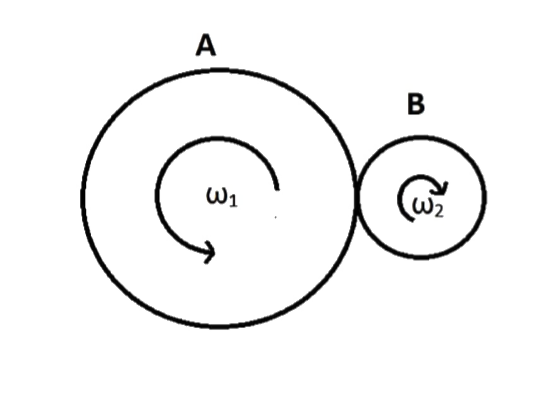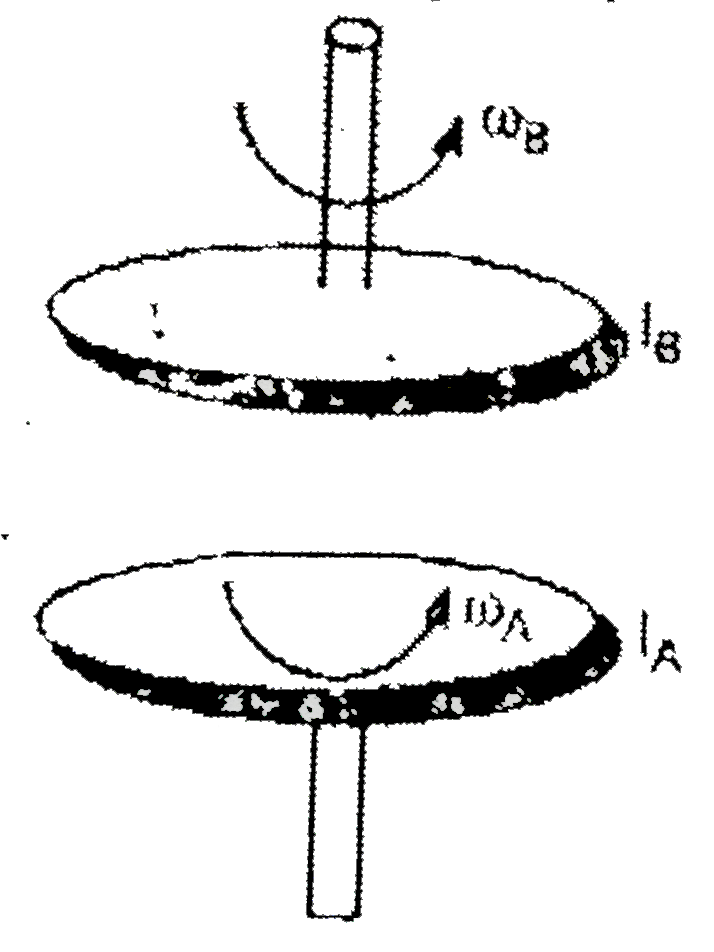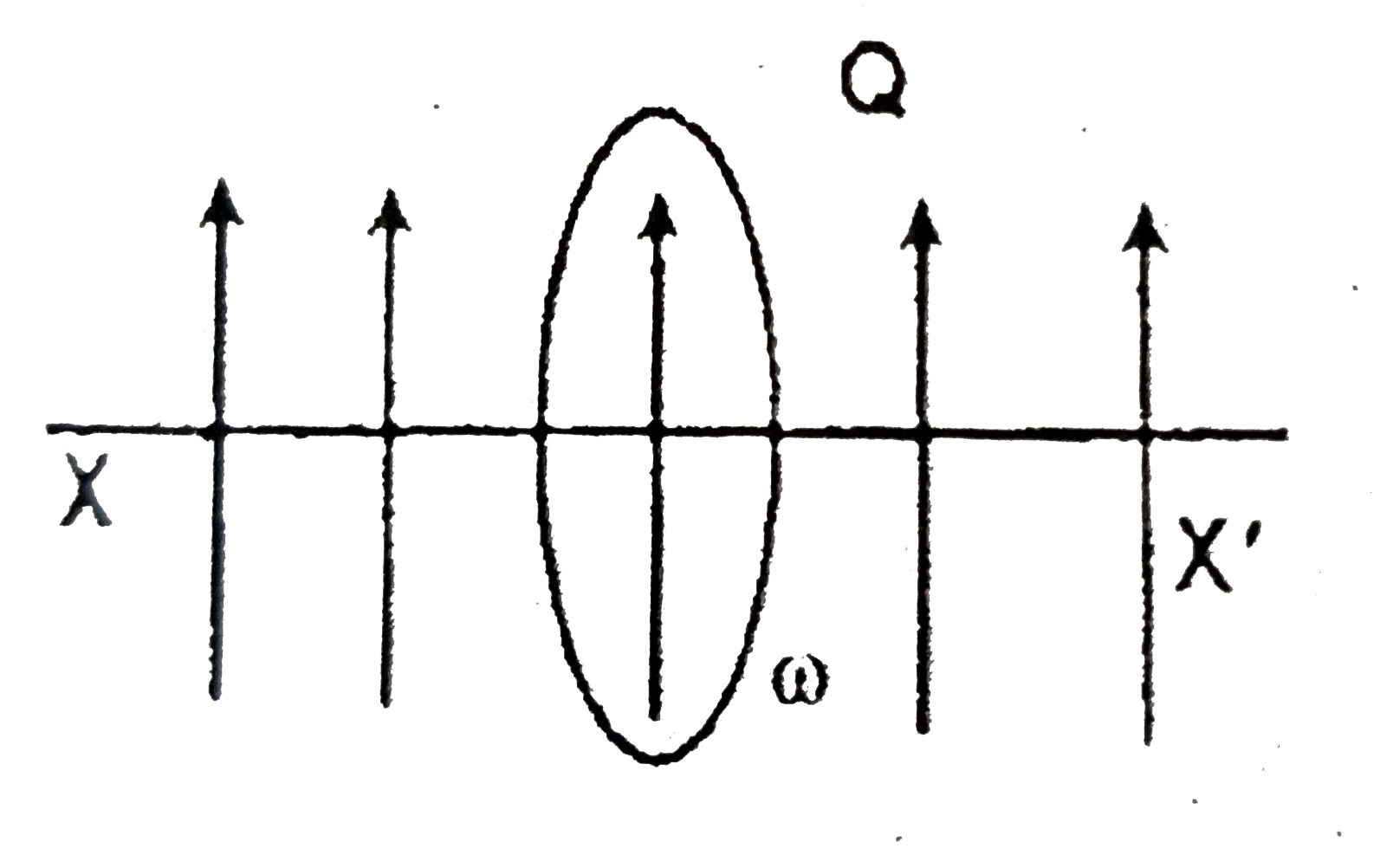Two discs A and B are in contact and rotating with angular velocity with angular velocities ω1andω2 respectively as shown. If there is no slipping between the discs, then

ω1=ω2
ω1>ω2
ω1<ω2
data insufficient
Step by step video & image solution for Two discs A and B are in contact and rotating with angular velocity with angular velocities omega_(1) and omega_(2) respectively as shown. If there is no slipping between the discs, then by Physics experts to help you in doubts & scoring excellent marks in Class 12 exams.
Updated on:21/07/2023Topper's Solved these Questions
Similar Questions
A clutch assembly consists of two discs A and B of moment of inertia 2I and I respectively, one being the engine fly wheel, the other one is the clutch plate. The discs are initially rotaing with angular velocities ωA=ω and ωB=2ω as shown in fig. When the two disc are brought into contact the discs rub against each other and eventually reach a common angualr velocity ω.
(a) Derive an expressio for ω
(b) What is the angular impulse of friction on any one of the discs?

View SolutionIf two disc of moment of inertia l1 and l2 rotating about collinear axis passing through their centres of mass and perpendicular to their plane with angular speeds ω1 and ω2 respectively in opposite directions are made to rotate combinedly along same axis, then the magnitude of angular velocity of the system is
View Solution
Knowledge Check
Two uniform circular rough disc of moment of inertia I1 and I12 are rotating with angular velocity ω1 and ω12 respectively in same direction. Now one disc is placed the other disc co-axially. The change in kinetic energy of the system is :
A−124I1ω12B124I1ω12C112I1ω12D−112I1ω12Two discs of same moment of inertia rotating their regular axis passing through centre and perpendicular to the plane of disc with angular velocities ω1 and ω2. They are brought into contact face to the face coinciding the axis of rotation. The expression for loss of enregy during this process is :
A14I(ω1−ω2)2BI(ω1−ω2)2C18(ω1−ω2)2D12I(ω1+ω2)2Two discs of moments of inertia I1 and I2 about their respective axes, rotating with angular frequencies, ω1 and ω2 respectively, are brought into contact face to face with their axes of rotation coincident. The angular frequency of the composite disc will be A.
AI1ω1+I2ω2I1+I2BI2ω1+I1ω2I1+I2CI1ω1+I2ω2I1−I2DI2ω1+I1ω2I1−I2
Two discs of moments of inertia I1 and I2 about their respective axes , rotating with angular frequencies ω1 and ω2 respectively, are brought into contact face to face with their axes of rotation coincident. The angular frequency of the composite disc will be
View SolutionA disc of mass m has a charge Q distributed on its surface. It is rotating about an XX' with a angular velocity ω. The force acting on the disc is

View SolutionTwo coaxial discs, having moment of inertia I1 and I12, are rotating with respective angular velocities. ω1 and ω12, about their common axis. They are brought in contact with each other thereafter they rotate with a constant angular velocity. If Ef and Ei are the final and initial total energies, then (Ef−Ei) is:
View SolutionWhen a disc rotates with uniform angular velocity, which of the following is not true ?
View SolutionWhen a disc rotates with uniform angular velocity , which of the following is not true ?
View Solution
